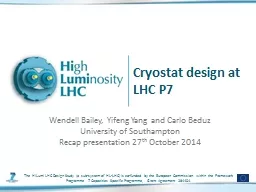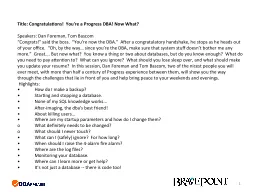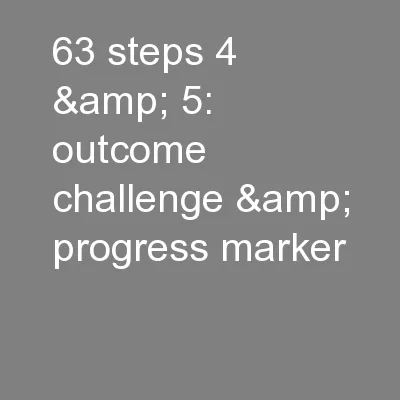PPT-Progress
Author : trish-goza | Published Date : 2016-04-20
in cryostat design SC Link at LHC P7 Wendell Bailey Carlo Beduz Yifeng Yang University of Southampton 19 th November 2014 Constraints at LHC P7TZ76 TZ76
Presentation Embed Code
Download Presentation
Download Presentation The PPT/PDF document "Progress" is the property of its rightful owner. Permission is granted to download and print the materials on this website for personal, non-commercial use only, and to display it on your personal computer provided you do not modify the materials and that you retain all copyright notices contained in the materials. By downloading content from our website, you accept the terms of this agreement.
Progress: Transcript
Download Rules Of Document
"Progress"The content belongs to its owner. You may download and print it for personal use, without modification, and keep all copyright notices. By downloading, you agree to these terms.
Related Documents














